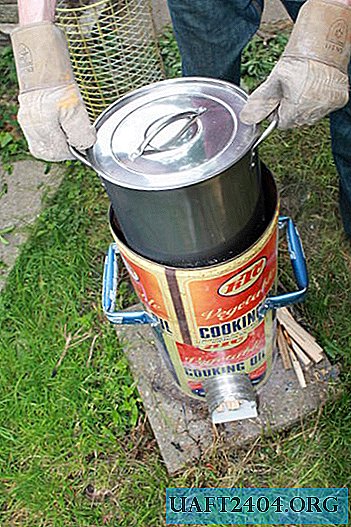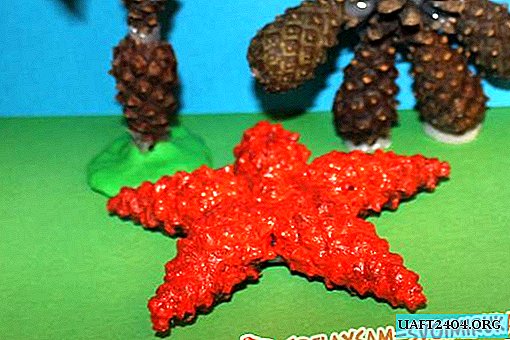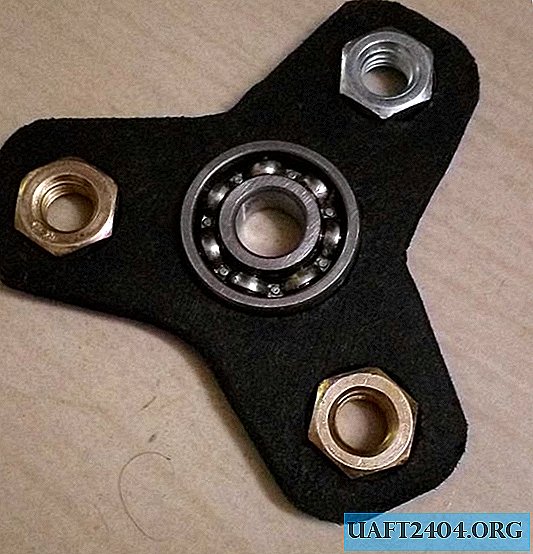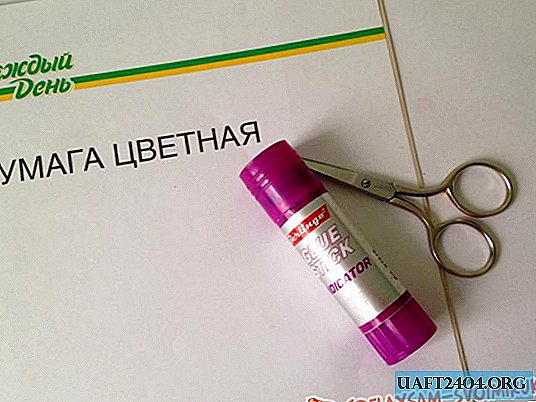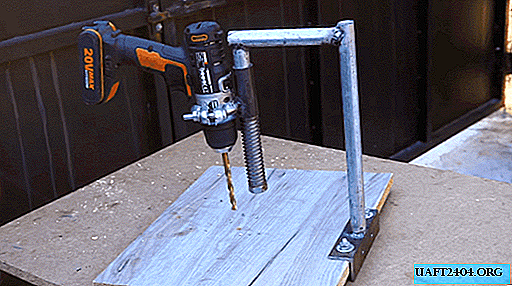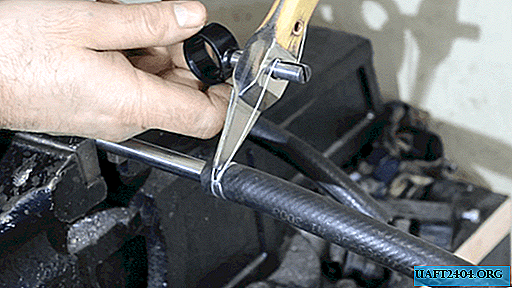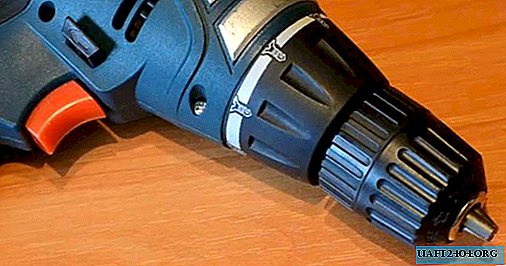Share
Pin
Tweet
Send
Share
Send
Used material and tool for sewing a cover
1) 1 meter of fabric (in this case, crepe),
2) 0.5 meters synthetic winterizer,
3) threads of a suitable color,
4) a fringing tape,
5) scissors, chalk or pencil, measuring tape,
6) pattern or old case.
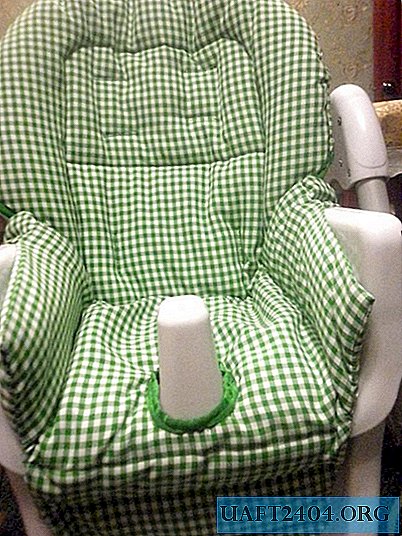
Making patterns and cutting material
First you need to start with the choice of fabric. This is for your taste. You can take a raincoat fabric - it is easy to maintain, durable, wear-resistant and easy to wear. But it will not be very pleasant for the child to sit on it, since it glides and is cool to the touch. Velveteen - will look very expensive and the child will sit on it pleasantly and comfortably, but cleaning is already a problem. In this case, crepe is used. It is less durable than raincoat fabric, but more pleasant to the body, it is easily erased and does not wrinkle.
To begin, proceed to the pattern of the future cover for the table. For these purposes, you can use the old cover, or if it is not preserved, you can make a pattern of oilcloth. To do this, take a suitable piece of oilcloth and attach it to the chair. We draw a marker with all the parts and the details of the chair where the future cover will be attached. Next, we cut out the template and once again apply it to the chair and check that all the parts fit snugly and coincide with each other. Then we take the fabric and fold it in half. We attach the old cover from the chair and begin to circle it over the fabric. Next, we cut out the pattern with a small margin for the synthetic winterizer and allowances for the seams.

We do the same with sintepon, only we cut it strictly according to the pattern.

We also make patterns of the back (1 part) and side fastening of the cover (2 parts on each side).

Tailoring of a cover for a children's table for feeding
To begin, proceed to sewing small parts of the cover. Let's start by sewing side fasteners. We cut off the rivet buttons from the old case (or use new ones). We make a hole on two workpieces, we trim them with a zigzag seam or if there is an overlock. We insert the buttons into the resulting hole and sew them. Next, we add two parts: one without a button and the other with the wrong side of the button inward. We flash it, and in the end we get such side mounts.

Then we are preparing the rear cover fastening. We make a border for the cutout for the seat handle and the lower front part of the part.

We proceed to sewing the cover for the table itself. For starters, on one part of the cover we attach as well as to the side fasteners, buttons for attaching to the chair at the bottom. Fold both parts with the front side inward, pin the finished side fasteners to the place of their connection with the chair. We sew in an ordinary seam from one side fastening of the chair to the other, the upper part does not need to be sewn. After a zigzag seam, we surely process the sewn edges of the fabric.

We turn the cover on the front side, smooth it well. We insert the pattern from the synthetic winterizer inside and to fix it, we sew along the sides and bottom of the chair seat. Details can be seen in the photo below. And also cut a hole for the protective bumper of the seat.

Next, we make the edging of the cutout for the bumper, and we flash the case with a synthetic winterizer at the top (as it was on the old case). Then we make the markings on the cover under the seat belts and, using the buttonhole foot, sew the tags under the belts. After that, it remains only to cut the fabric.

We turn to the final part of sewing a cover for a children's table for feeding. We sew two edges together, processing the edges for greater accuracy of the seam with the help of the edging tape. Here is what should happen.


Next, sew the back cover fastener. We fold the cover and the fastening pattern to each other with the front side and stitch it, process the seams with a zigzag stitch or overlock. We turn out the resulting cover on the front side.

It remains only to smooth our cover and put it on a chair. Here is the result.
Conclusion on the master class
In this master class, sewing a cover for a feeding table was described in detail. It takes very little time to sew it, and the cost of the fabric is not large. To make such a cover to order is a costly pleasure. Therefore, all those who know how to sew at least a little and love needlework can easily please their child with a new and comfortable seat cover. Good luck in the creative processes.

Share
Pin
Tweet
Send
Share
Send

